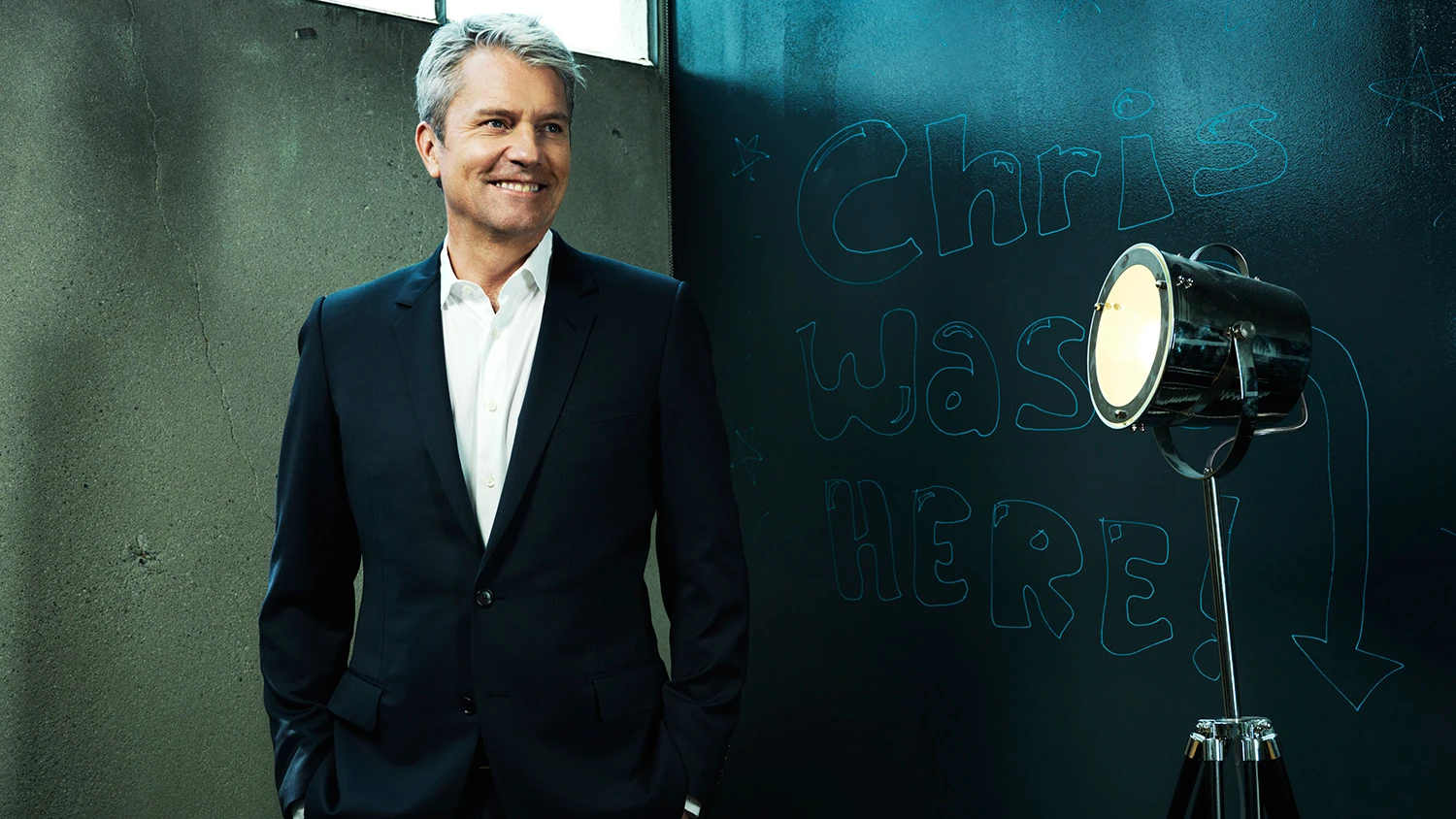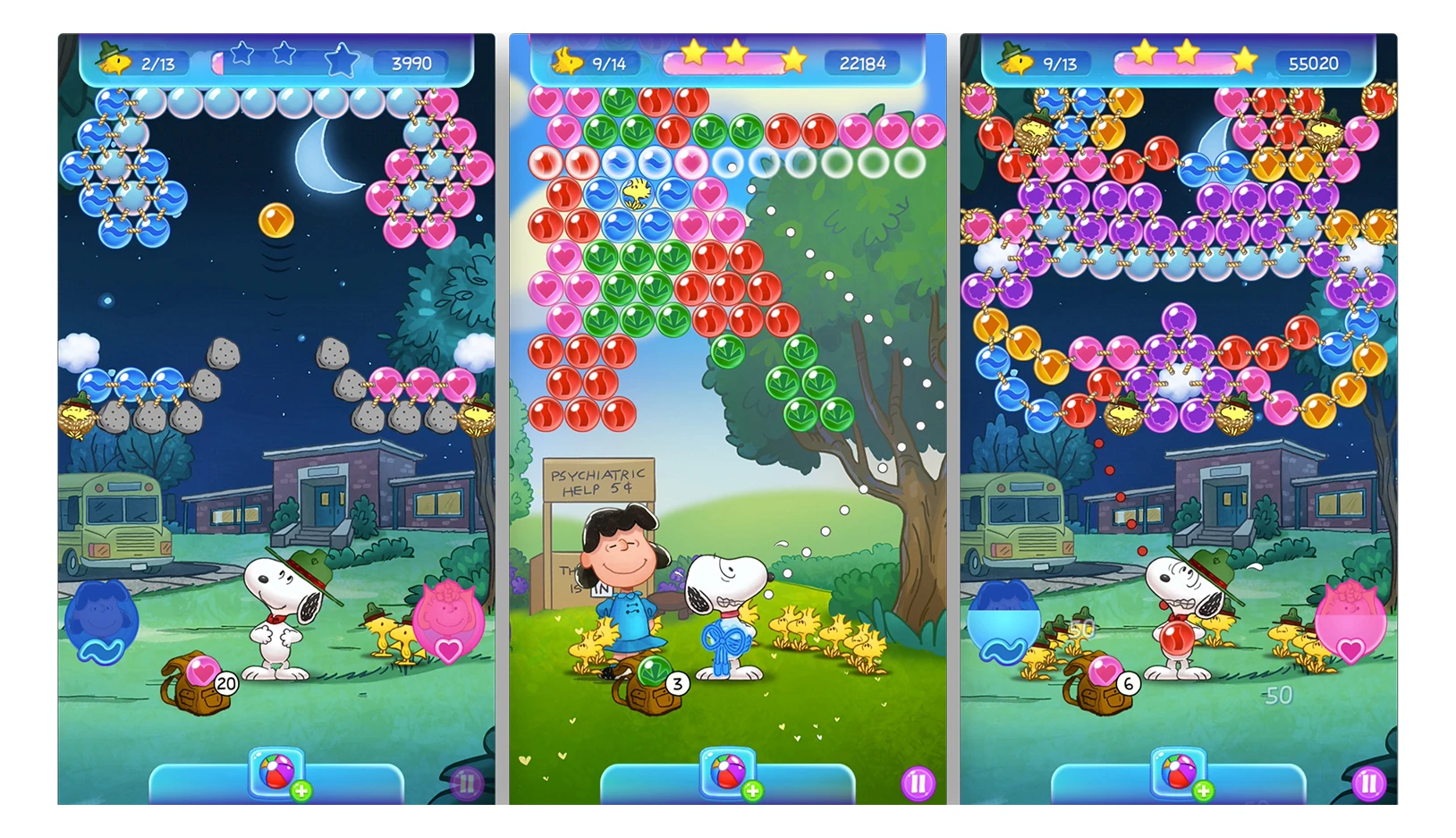It’s not easy following a wise-ass robot and one-eyed spaceship captain. But Jam City CEO and MySpace co-founder Chris DeWolfe held his own as he thanked a packed audience of enthusiastic fans and industry folks who turned up at Hollywood’s Avalon Theater in June for a staged reading with the Futurama creators and the cast of its classic episode, “Proposition Infinity.”
The event launched the June release of the Futurama: World of Tomorrow mobile game from Jam City and subsidiary Tiny Co—its fourth venture with 20th Century Fox and the first mobile game to adapt a TV show no longer on the air. Instead of simply licensing a current intellectual property to cross-promote, this game utilizes the original creators, writers, and voice-over cast from the 1999-2013 animated Fox series to create new storylines within the gameplay.
A non-current property might seem an odd choice for a new game. But it plays to a strategy that has transformed Jam City into a $370 million business: Listen to users. A Futurama game was actually Jam City’s top customer request. A social media marketing effort that uses original animation featuring Stephen Hawking, George Takei, Bill Nye, and Neil deGrasse Tyson has already racked up tens of millions of downloads and micro-transaction dollars.
“I became sensitive to user experience at MySpace,” DeWolfe says. “Tapping the pop culture zeitgeist signaled it was going to be successful. Futurama now lives on in the game. For fans, it’s the only place you’ll be able to see new storylines from the original creators.”
Since launching Jam City (formerly SGN) in Los Angeles in 2010, the mobile gaming company has navigated a consolidating industry to expand through acquisitions, Hollywood partnerships, innovative proprietary technology and data mining, and original game development. It now employs 500 staffers in six studios in California and Buenos Aires, and its games have been downloaded more than 800 million times and played by more than 50 million active monthly users worldwide. Last year (per the latest figures), six of Jam City’s 10 games ranked as iOS/Google Play top grossers: Cookie Jam (Facebook’s 2014 Game of the Year), Panda Pop, Family Guy: The Quest for Stuff, Juice Jam, Marvel Avenger Academy, and Genies and Gems. The company plans to triple the number of new game launches to some half dozen this year.
With 100% annual growth, compounded over the last five years, the firm anticipates nearly a half billion dollars in revenue over the next 12 months, and DeWolfe is considering taking Jam City public in the next two years.
“We’ve designed the company to eventually reach predictable revenues and EBITDA [earnings before interest, taxes, depreciation, and amortization],” Dewolfe says. “Aside from an influx of cash, a public offering cements a monetary value for the company and provides a currency for future acquisitions.”
Jam City’s business approach—one marked by a focused product line, calculated expansion, user experience over quick revenue growth, and inclusive corporate culture—borrows from DeWolfe’s traditional and digital business training and lessons learned from MySpace.
The Lessons of MySpace
DeWolfe’s tenure at MySpace afforded him valuable lessons for building Jam City. After earning an MBA from the University of Southern California in 1997, he worked in the nascent cloud storage arena before co-founding MySpace in 2003. He sold it two years later to News Corp. for $580 million. It earned $700 million at its peak and remained the most visited site until 2008. Differing opinions on how to run MySpace led to DeWolfe amicably departing in 2009. Around this time, the site’s traffic steadily declined. Today MySpace is owned by Time, Inc.
The experience of running a digital start-up and assimilating with a traditional media conglomerate taught DeWolfe the importance of remaining focused on a few key features and prioritizing user experience before early revenues.
At MySpace, he says, “we tried to do everything all at once. It was the number one music destination. We built out streaming video, comedy, a movie and TV service, email and instant messaging—we had 12 different teams working on 12 different verticals and it got to be too much. We should have spent 90% of our resources on core social experience.” (In addition to operations, like page-load time.)
As for integrating an interactive digital startup that answered to users with a traditional media conglomerate that answered to shareholders, DeWolfe says, “News Corp. focused more on revenue and placed undue pressure on us to create profits instead of improving the user experience. We didn’t change it for a long time. We went from a growth company to a mature company when we weren’t ready; we were still growing.”
But in business, past errors provide critical information. “There’s something about learning from mistakes to figure out your focus, know how to create a smart business plan, pay attention to user experience, and when to make a company profitable,” DeWolfe says. “We operate our games as a service that we continually improve.”

And Jam City never loses sight of its core audience. “A lot of companies have failed, because they’ve gotten out of their sweet spot,” he says. “The games we develop are typically within a similar genre, demographic, and mindset—mostly female-focused, evergreen-type games—and have time-honored game mechanics [playing methods]. Like-minded demos makes them easier to cross-promote throughout our network.”
Jam City prototypes and consumer-tests new games for up to two years before launching. Afterward, the company continues to update the games’ play modes, social interactivity, character storylines, and opportunities to purchase virtual goods, DeWolfe explains, “so you don’t have this decay occur where you build a game, it’s a hit like a movie, and then you have to look for your next revenue stream. It’s not like the TV or film industry. We’re thinking about what’s going to be cool in 2019 and how to update current products, as opposed to jumping on what was hot last year.”
Happier Gamers Through Analytics
Deep investments in technological innovation, data science, and audience intelligence have helped Jam City forge a competitive advantage by streamlining game development and enhancing user experience.
Early on, before such technology became ubiquitous across the mobile gaming industry, Jam City developed proprietary software to continue games where they left off across four platforms. The software not only gave it a leg up on competitors, but also made it possible to publish games simultaneously on those platforms without having to redevelop them for each one, which effectively shaved six months of development time per game, had they been built separately per platform. Today, that software is farmed out to Unity, but in-house programmers continue to upgrade physics engines to handle more complex movement, gaming mechanics, and narratives, while machine learning optimizes gameplay by tracking playing patterns.
Last year, DeWolfe hired two doctorates—in chemical engineering computer-aided design and experimental psychology—to grow the company’s consumer research and machine learning/artificial intelligence divisions to optimize gameplay per user playing patterns, game interaction, and purchasing behavior.
Bringing a Jam City game to market is both a creative and data-driven process. During development, Jam City developers create a “slice” of a game and use A.I. to test consumer engagement and retention, then analyze player behaviors with a goal of making—and keeping—those games more appealing. Fine-tuning continues after launch.
“Each game has its own economy, with merchandising, sales and events, marketing, customer acquisition, lifetime value of customers,” DeWolfe says. “We can constantly tweak and make them better, or test their performance in different economies. If too many people are dropping out of games or tutorials, or not moving onto next levels fast enough, we change that so it remains enticing.”
Individual game titles can grow into billion-dollar businesses. “We are building mobile franchises,” he says. “Our games are designed to be played for 10 years or longer, and we can continue to add more content based on new insights. Our original games are developed to grow into iconic brands with worldwide recognition and appeal.”

A Culture of Inclusion
Motivating employees through an inclusive corporate culture and philanthropy is another strategy rooted in DeWolfe’s MBA days and honed at MySpace.
“It’s much more of a ‘we’ thing,” DeWolfe says. “I work with awesome co-founders with very different strengths. We try to make a creative space for artists, game designers, engineers, musicians, and producers to work in harmony.”
Jam City employees participate in team-building activities with Habitat for Humanity, Los Angeles Mission, and Los Angeles River clean-ups. For the launch of its latest game, Snoopy Pop, Jam City donated $100,000 to Canine Companions for Independence, a favorite charity of the family of Snoopy creator Charles M. Schulz (and a natural fit for Jam City’s dog-friendly office). “We want our employees to feel proud of the company they work for,” DeWolfe says.
DeWolfe tries to match that culture when considering acquisitions. “We only acquire companies with similar cultural values and game mechanics that fit with our other IP, and try to partner with the CEO of the other company,” he says. “We’ve pulled out of deals after negative focus group feedback on IP or not being able to agree culturally. You can’t try to force synergies where none exist.”
Recognize your company's culture of innovation by applying to this year's Best Workplaces for Innovators Awards before the extended deadline, April 12.
